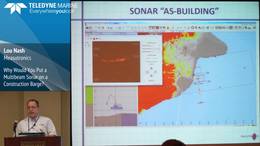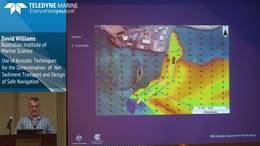The Technological Evolution of Dredging
Learn more about Teledyne Marine dredge and construction solutions>
Hydraulic dredges have evolved from steam powered, manually controlled devices to sophisticated, energy efficient machines designed to present minimal negative effects on the environment. The equipment being manufactured today incorporates advanced algorithms to predict pipeline lengths, elevations, particle grain size, and required transport velocities. Many of these machines assist the operator in controlling the dredge's navigational path and speed as well as the production rate. In the next several months, several dredges in North America will be deployed with autonomous capabilities that include artificial intelligence and real-time sub-surface imaging and mapping with the primary goal of increased efficiency with less risk.
Presented by:
William Wetta
DSC Dredge LLC
At Teledyne Marine Technology Workshop 2019






